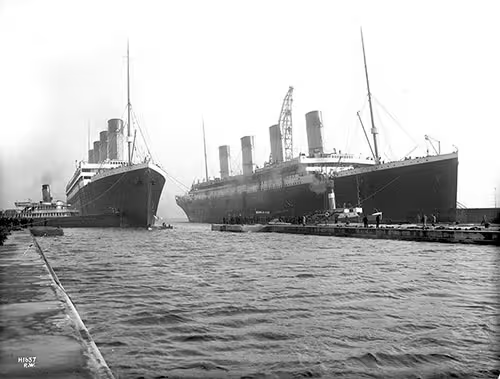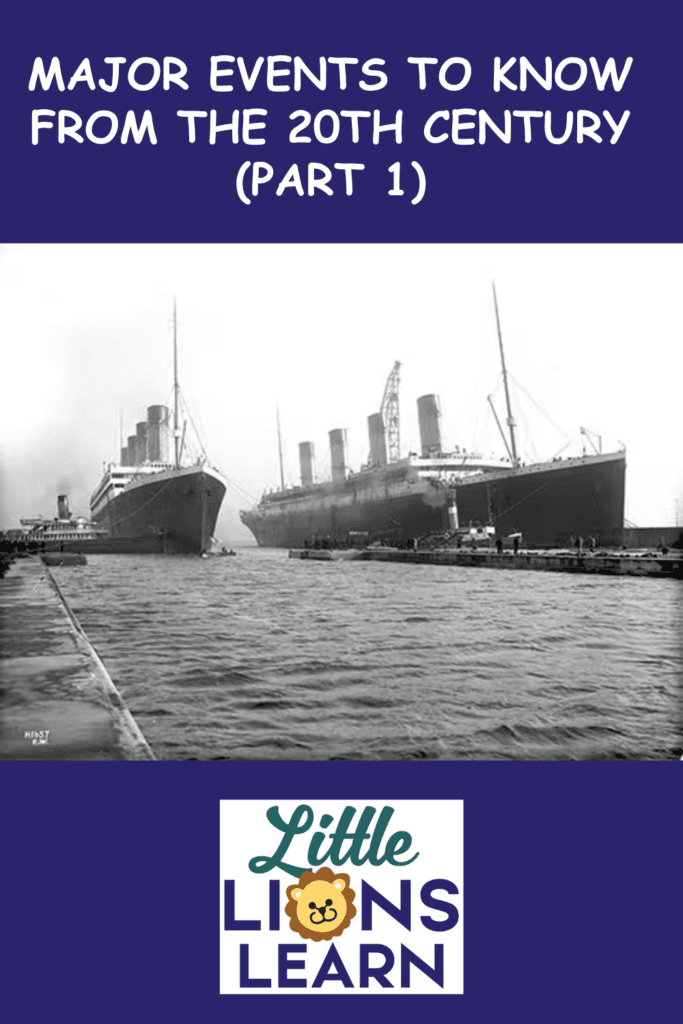Major Events to Know from the 20th Century (part 1)

The 20th Century was a time of great conflict, advancements in technology, and political shifts. Knowing about these major events help to give us a better understanding of where we have been as human beings, so we can move forward wiser than before. Here are some highlights from the 20th century to know and learn from. (based on the book: What Everyone Should Know About the 20th Century)
*This page contains affiliate links, and we earn a commission if you make a purchase through one of these links, at no extra cost to you.
1898- The United States Goes to War with Spain
General Valeriano Weyler arrived in Cuba to function as Spain’s new colonial governor. Weyler’s primary job was to quiet the growing rebellion in Cuba, which began with throwing Cuban citizens into “reconcentration” camps to prevent them from supplying the rebels with things they needed.
In response to this, and after much publicity, President McKinley sent the battleship Maine to Havana Harbor to protect U.S. Citizens. When the Maine blew up on February 15th, there was nationwide outrage and cries of “Remember the Maine!”. In April of the same year, McKinley asked Congress to allow for troops to be sent to Cuba. Congress also passed a resolution recognizing Cuba’s independence, and Spain declared war on the United States.
The war was quick and decisive. In August, Spain agreed to withdraw from Cuba. They also ceded Puerto Rico and Guam to the United States, and eventually sold the Philippines to them as well. President McKinley was assassinated in September of 1901, and Vice President Theodore Roosevelt assumed office before being elected to continue serving as president in 1904. During his presidency, he established a policy known as the Roosevelt Corollary to the Monroe Doctrine, which effectively made the United States an international police force in the region.
1900- German Theoretical Physicist Max Planck Proposes the Quantum Theory
At a meeting of the Berlin Physical Society in 1900, Max Planck gave a revolutionary explanation for the “ultraviolet catastrophe” that proposed vibrating particles can only radiate at certain energies. Rather than energy being given off continuously, he suggested that it may be given off in discrete pieces or “quanta.” He worked out the relationship between energy and frequency as a universal constant, which represented the “graininess” of energy. The implications of his research were further explored by Albert Einstein, who published a paper on the subject in 1905.
1903- Wright Brothers Fly the First Airplane
After reading a newspaper article in 1896 about the death of German aeronautical experimenter Otto Lillienthal, Wilbur and Orville Wright began researching gliders, and built a few of their own. They built the world’s first wind tunnel in 1901 to help with their research into flight. In 1903, on the beach in Kitty Hawk, North Carolina, Orville made the first piloted, powered, sustained, and controlled flight that lasted for twelve seconds and 120 feet. By 1905, they were able to fly for over thirty-eight minutes and a distance of twenty-four miles. They filed for, and received, a patent for their invention in 1906.
1908- The Young Turks Revolt
At the end of the 19th century, the Ottoman Empire was in decline. At its height, it had been a force to be reckoned with and encompassed much of central and eastern Europe, western Asia, and North Africa; but, constant war and corruption had caused the dynasty to begin to fade and collapse. The final straw was when the empire’s ruler, Sultan Abdullhamid II, revoked the constitution that had previously governed the land, and unleashed a secret police force on his citizens. The empire’s intellectuals were banished, and tens of thousands of Armenians were massacred. In 1908, the Young Turks staged a revolt to save the empire.
Rather than demanding the sultan step down, the rebels asked for restoration of the constitution, which was granted by Abdullhamid. However, the Young Turks failed to take effective control of the government, and over the next two years the sultan staged a counterrevolution, which further destabilized the country. By the end of World War I, the rest of the once-great empire was completely gone- dissolved into various smaller countries and people groups.
1911- Chinese Revolution Staged by Sun Yat-sen
Known as the father of modern China, Dr. Sun Yat-sen was an exiled Alliance leader who outlined his plan for a nationalist China to college students in Tokyo. He wanted a country based on freedom and equality and right of self-government. He introduced the “doctrine of livelihood,” and wanted land and capital to be equitably distributed to China’s citizens.
The Qing Dynasty was on the verge of collapse and in a vulnerable state. The Dynasty introduced constitutional reforms in an attempt to appease the people, but to Sun Yat-sen and his followers it wasn’t enough. They marched on Wuhan, and by December of 1911, Sun was president of South China. His general Yuan had the loyalty of much of the north, and Sun offered to give him South China if he would get the emperor to step down in the north. Sun desired a strong and united China. Yuan agreed, but betrayed Sun Yat-sen, and the conflict that followed left China without a clear political leader. China grappled with the instability for over three decades.
1912- The Titanic Sinks
The Titanic was a British passenger vessel that was the largest passenger ship of its time. It represented the summation of art and science- an amazing and “unsinkable” ship that was the envy of the world.
On its maiden voyage from Southampton, England, to New York, the ship carrying 2,200 people, hit an iceberg and began to sink. The ship that was thought to be unsinkable took on water quickly, and by the time help arrived over 1,500 passengers had drowned. As a result of the tragic accident, various national and international safety measures were instituted to ensure it wouldn’t happen again.
The Titanic was the first ship to use Guglielmo Marconi’s wireless telegraph to send out a distress call. This reinforced the importance of access to such communication during travel.
1913- The United States Imposes a Tax on Personal Income
In 1913, the states ratified the 16th amendment to the Constitution, which gave the federal government the power to impose taxes on personal income. Although income taxes had been temporarily implemented to fund the Civil War, it had ended in 1865.
Congress attempted to bring income taxes back in 1894 to redistribute wealth, but it was declared unconstitutional by the Supreme Court at the time, who denounced it as a “communistic threat.” However, in 1909 President William Howard Taft proposed a constitutional amendment to bypass the high court. The first rates imposed with the new graduated income tax collected 1% of taxable income about $3k for individuals, and 7% for incomes over $500k. During World War I, rates reached a high of 77%. The graduated income tax has increased and decreased over time- during World War II the top income tax rate topped 91%.
The flow of money to the government was made easier by the implementation of an automatic withholding system in 1943. The Internal Revenue Service was formed in 1953.
Conclusion:
History is a fascinating and important subject to study for all ages. It shows us where we as a people, and as humanity, have been, and if we are diligent in studying the mistakes our forefathers have made, we are less likely to repeat them. Major events such as these from the 20th Century are like breadcrumbs that lead us from the past to the place where we are today, and they show us just what humanity is capable of- the good and the bad. May we all strive to be diligent students of history.

